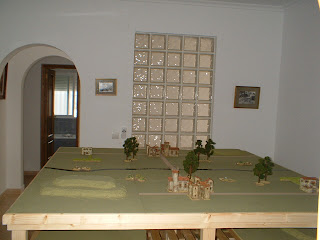
My last post seems to have struck a nerve with MurdocK, who posted a very interesting response in the Comments.
He has run five internet campaigns and confirms that the one thing he can count on is “delay or non-response from key players”. So at least I am not alone! He goes on to explain the “consequences” he has introduced to deal with this sort of behavior. He then goes on to consider how to avoid this problem. A very interesting and well thought out response.
Having considered the problem some more, I have come to the conclusion there is not much more I can do. My campaign is already of short duration, so players do not have to commit for more than three months. It is fast moving, with a move at least once a week, so they should not get bored. The campaign diary blog is updated almost every single day, and battles covered in great detail.
The campaign is explained in advance, and what is required of them. In particular I lay great stress on meeting the 48 hour timetable. I also explain why it is necessary.
The administration of the campaign is very user friendly for the player. They receive an update at the start of each move, which provides everything they need for their next set of orders. There is an example of how to write orders, and what to consider. They are then given 48 hours to write their orders. Hard to see how it could be much easier.
So if they fail to respond, or just walk away from the campaign, I doubt anything else I can do would make any difference.
The real problem is recruiting the right sort of players. The internet provides a wide pool of prospective players, but they are all unknown in personal terms. So you have to take everyone at face value. There is really no alternative, and you just have to hope for the best.
I don’t think any sort of disciplinary procedure would have the slightest effect; indeed it might make matters worse. The ones who lose interest are not likely to respond to any sanction. But those who have an unavoidable delay would quite likely resent any sanction. I think everyone wants a quite life and a fun campaign. They really don’t want me telling them off for taking an extra few hours to reply.
When we moved to Spain we found it hard to accept the laid back attitude to life. A builder would promise to come tomorrow, fail to turn up and then fail to understand why you are upset. It is the downside of the relaxed, easy going, wine drinking life style which we all love. And you just have to accept the “downs” with the “ups”.
I think PBEM campaigns might just be the same.










